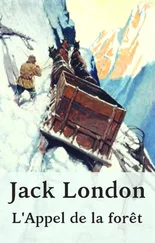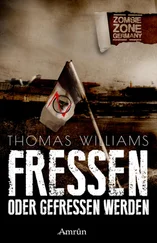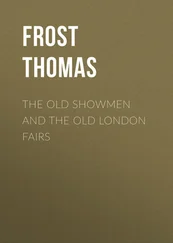Thomas Williams - Viking London
Здесь есть возможность читать онлайн «Thomas Williams - Viking London» — ознакомительный отрывок электронной книги совершенно бесплатно, а после прочтения отрывка купить полную версию. В некоторых случаях можно слушать аудио, скачать через торрент в формате fb2 и присутствует краткое содержание. Жанр: unrecognised, на английском языке. Описание произведения, (предисловие) а так же отзывы посетителей доступны на портале библиотеки ЛибКат.
- Название:Viking London
- Автор:
- Жанр:
- Год:неизвестен
- ISBN:нет данных
- Рейтинг книги:4 / 5. Голосов: 1
-
Избранное:Добавить в избранное
- Отзывы:
-
Ваша оценка:
- 80
- 1
- 2
- 3
- 4
- 5
Viking London: краткое содержание, описание и аннотация
Предлагаем к чтению аннотацию, описание, краткое содержание или предисловие (зависит от того, что написал сам автор книги «Viking London»). Если вы не нашли необходимую информацию о книге — напишите в комментариях, мы постараемся отыскать её.
Viking London — читать онлайн ознакомительный отрывок
Ниже представлен текст книги, разбитый по страницам. Система сохранения места последней прочитанной страницы, позволяет с удобством читать онлайн бесплатно книгу «Viking London», без необходимости каждый раз заново искать на чём Вы остановились. Поставьте закладку, и сможете в любой момент перейти на страницу, на которой закончили чтение.
Интервал:
Закладка:
For the people of Lundenwic, however, it was the southern road that held the greater everyday importance during the eighth and early ninth centuries. Connecting the Roman walled city (and the church of St Paul’s) with an area of timber-built settlement encompassing what is now Covent Garden and the surrounding environs, the road ran just to the north of the sloping Thames foreshore, overlooking and providing access to the water. Before the twelfth century it was known formally as Akeman Street ( Akemannestraet ), from the Old English name for Bath ( Acemannesceastre ), the Roman city where the road terminated its straight-line drive through the western shires of England. 13But to the people of Lundenwic, just as to modern Londoners, their local stretch of this great road was almost certainly known by association with the shoreline that it shadowed: the Strand, a word unchanged in sound, form or meaning from the Old English ( strand : ‘shoreline’, ‘beach’, ‘bank’). 14
Craven Passage is one of the many crannies that riddle the city behind the grand façades, the modern steel and concrete. These are the mouseholes of history, the places where forgotten vistas and lost walks cling on in the shadows, pattering footsteps and muttered voices caught when the traffic dies away, when the light dims – a stone tape-recording. The Passage, the dingy underbelly of Charing Cross station, is a brick and flagstone vault that bores beneath the platforms of the Victorian station. At its eastern end in the subterranean half-light is the point of egress to Heaven nightclub on Villiers Street, one of the most famous of London’s gay clubs. It was just to the south of this dank underpass – part alleyway, part catacomb – that evidence of the Anglo-Saxon embankment was discovered in 1987: to walk the passage from Northumberland Avenue to Villiers Street is to promenade on the edge of Lundenwic’s waterfront, to jostle with sailors and dock-hands, barrels and slaves. At its western end the passageway emerges into daylight, splitting The Ship & Shovell into two – the only London pub that occupies both sides of a thoroughfare. Just beyond the pub, the passage crosses Craven Street where, left towards where the water once lapped against the Anglo-Saxon boardwalk, Herman Melville, author of Moby-Dick , lived for two months in 1849 at lodgings in number 25 – a handsome end-of-terrace Georgian house that still stands.
The writing of Moby-Dick probably began almost at the moment that Melville left London; his journal indicates that he had little enough time for writing amidst visits to the British Museum (‘big arm & foot–Rosetta stone–Ninevah sculptures–&c’), antiquarian shopping trips (‘Looked over a lot of ancient maps of London. Bought one (A.D. 1766) for 3 & 6 pence’), meetings with publishers and bouts of general indulgence (‘Porter passed round in tankards. Round table, potatoes in a napkin. Afterwards, Gin, brandy, whiskey & cigars’) – all in all, a fine summation of a writer’s ideal life in London. Ideas for the novel, however, were undoubtedly congealing during his stay in the city. 15‘It is not a piece of fine feminine Spitalfields silk,’ wrote Melville in 1851 of his masterpiece, ‘but is of the horrible texture of a fabric that should be woven of ships’ cables and hausers. A Polar wind blows through it, and birds of prey hover over it.’ 16 fn5It would no doubt have pleased him, thrilled him maybe, to have known that his lodgings were perched above the Anglo-Saxon waterline, where briny-arsed northern sailors once roamed.
The waterfront was further north than it is today, free from the brick and concrete accretions of later centuries that have squeezed the river into an ever-narrowing channel. But even in the eighth century the river’s edge was being adapted to human purposes. Fragments of the Anglo-Saxon waterfront have been found near Charing Cross station and Buckingham Street, running from 18–20 York Buildings towards Somerset House, skirting the north edge of Victoria Embankment Gardens. Here the foreshore was embanked with wooden and wattle revetments, creating an artificial timber floor which boats could be brought alongside and goods unloaded on to, and where much of the trade and barter probably took place. This timbered shoreline was the true heart of Lundenwic, a pulsing valve through which people, goods and silver passed back and forth along the water.
Between the Strand and Oxford Street, the other main roads of Lundenwic seem largely to have served as access to and from the waterfront. For the most part these are known from short fragmentary stretches of gravel highway that have been uncovered archaeologically or are inferred from the orientation of buildings. Drury Lane and St Martin’s Lane both seem to have been originally laid out in the seventh century as Lundenwic developed, and another north–south route probably ran from Charing Cross to Westminster, and north towards Oxford Street (the Silchester Road). The lines of these roads probably corresponded fairly closely to their modern counterparts, and can be traced in the earliest Tudor maps.
Elsewhere, excavations have produced evidence of narrow gravel lanes, running towards and parallel with the river, lined by rectilinear buildings and ditches laid out in a way that implies a regular street plan: little streets at right angles to each other, the dwellings and workshops of the townspeople set out in tidy rows. At the site of the Royal Opera House, at Maiden Lane and Exeter Street, at 36 King Street and 28–30 James Street and tucked at the north-eastern corner of Covent Garden square itself, the paths and holloways of the Anglo-Saxon settlement carved and crossed, etched into the clay by the footfall of people and beasts, the passage of carts and goods, the flow of games and fights and dancing. Passers-by would have drifted across the fronts of rectangular timber houses, many (though not all) with their gable-ends flush to the roadside, doors opening into rutted filth and stagnant water, mud, gravel and dung. Others were accessed from the long side, from narrow footpaths through yards that stank with refuse and the shit of cows, sheep, pigs, chickens and humans. There were gardens and animals, fences and outhouses, workshops and fruit trees and forges – a humming community of men, women, children and creatures.
Around a hundred buildings have been discovered in Lundenwic, not all of them active at the same time (many were built on top of the remains of others, making the job of archaeologists harder than it would otherwise be, obscuring and confusing the sequence of habitation at particular locations). The average size of a dwelling or workshop was approximately forty feet long and eighteen feet wide – not palatial by any means, although a cash buyer for that sort of square footage in Covent Garden today would have to be a multi-millionaire. Buildings were timber-framed and single-storey, with walls of wattle and daub and roofs of thatch or oaken shingles; they were heated by rectangular floor-hearths or round ovens, and lit by ceramic oil-lamps and candles. Doors swung on iron hinges and were secured with iron bolts. It was in these buildings – whether homes or workshops or both – that the craftsmen and women of Lundenwic worked.
One of the things that seems to have attracted foreign traders to Lundenwic (and other English wics ) was worked textile: cloth – both linen and wool – was not merely exchanged at London’s market, but was also made there. The evidence can be found across Lundenwic. Finds of spindle whorls and loom weights in considerable numbers imply a substantial output, a craft industry that supplied textiles to serve personal needs and domestic markets as well as to meet a demand for high-quality exports. Particular concentrations of evidence for weaving have been found at two sites that lie on the line of Drury Lane (55–57 Drury Lane and Bruce House at 1 Kemble Street), and at a location in Covent Garden on the edge of Lundenwic, bounded by Shorts Garden, Earlham Street and Neal Street – a stone’s throw from Seven Dials.
Читать дальшеИнтервал:
Закладка:
Похожие книги на «Viking London»
Представляем Вашему вниманию похожие книги на «Viking London» списком для выбора. Мы отобрали схожую по названию и смыслу литературу в надежде предоставить читателям больше вариантов отыскать новые, интересные, ещё непрочитанные произведения.
Обсуждение, отзывы о книге «Viking London» и просто собственные мнения читателей. Оставьте ваши комментарии, напишите, что Вы думаете о произведении, его смысле или главных героях. Укажите что конкретно понравилось, а что нет, и почему Вы так считаете.












